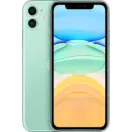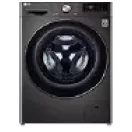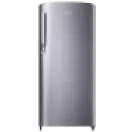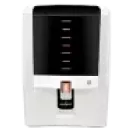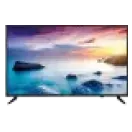The Snapdragon 7 Gen 1 vs Snapdragon 778G comparison reveals significant advancements in mobile processor technology, enhancing overall performance and user experience. The Snapdragon 7 Gen 1 offers a higher clock speed and improved GPU, ensuring smoother and more efficient operation. This upgrade significantly boosts gaming and multitasking capabilities, making it an ideal choice for the
best gaming mobile phones. On the other hand, the Snapdragon 778G remains a strong contender with its balanced performance and power efficiency, providing a solid experience for everyday tasks and moderate gaming. Both processors support advanced AI features and 5G connectivity, ensuring seamless communication and smart device integration.
When considering
Snapdragon Processor Phones, the Snapdragon 7 Gen 1 stands out for its superior graphics performance and enhanced AI capabilities, catering to high-end gaming and complex applications. It supports faster data processing and improved camera functionalities, making it perfect for photography enthusiasts. Conversely, the Snapdragon 778G excels in power efficiency, making it suitable for users seeking a balance between performance and battery life. Both processors offer robust 5G support, but the Snapdragon 7 Gen 1 edges out with its advanced features and higher performance metrics, making it the preferred choice for those looking to invest in cutting-edge mobile technology.
Technical specifications - Snapdragon 7 Gen 1 vs Snapdragon 778G General Info
The Snapdragon 7 Gen 1, announced on 22 July 2024, is a premium mid-range processor by Qualcomm, identified as model SM7475. In contrast, the Snapdragon 778G, launched on 25 May 2021, is a mid-range processor, also by Qualcomm, and is designated as model SM7325.
| Feature | Snapdragon 7 Gen 1 | Snapdragon 778G |
| Announced Date | 22 July 2024 | 25 May 2021 |
| Class | Premium Mid-Range | Mid-Range |
| Model number | SM7475 | SM7325 |
| Brand | Qualcomm | Qualcomm |
CPU
The Snapdragon 7 Gen 1 features a cutting-edge ARM Cortex-X2 core with a frequency up to 3.0 GHz, built on a 4nm process. It utilizes the ARMv9 instruction set. The Snapdragon 778G, in comparison, operates with up to 2.4 GHz on an ARM Cortex-A78 core and is manufactured using a 6nm process with the ARMv8.4 instruction set.
| Feature | Snapdragon 7 Gen 1 | Snapdragon 778G |
| Architecture | ARM Cortex-A78 & Cortex-A55 | ARM Cortex-A78 & Cortex-A55 |
| Cores | Octa-core (1x Cortex-X2, 3x Cortex-A710, 4x Cortex-A510) | Octa-core (1x Cortex-A78, 3x Cortex-A78, 4x Cortex-A55) |
| Frequency | Up to 3.0 GHz (Cortex-X2) | Up to 2.4 GHz |
| Instruction set | ARMv9 | ARMv8.4 |
| Process | 4nm | 6nm |
| TDP (Sustained Power Limit) | 8W | 8W |
| Manufacturing | Samsung | TSMC |
Graphics
The Snapdragon 7 Gen 1 is equipped with an Adreno 740 GPU, featuring 384 shading units and a maximum frequency of 840 MHz. It supports Vulkan 1.2 and OpenCL 2.0. The Snapdragon 778G’s Adreno 642L GPU offers similar specifications with slightly lower performance metrics.
| Feature | Snapdragon 7 Gen 1 | Snapdragon 778G |
| SoC | Snapdragon 7 Gen 1 | Snapdragon 778G |
| GPU name | Adreno 740 | Adreno 642L |
| Architecture | Adreno | Adreno |
| GPU frequency | Up to 840 MHz | Up to 840 MHz |
| Execution units | 6 | 6 |
| Shading units | 384 | 384 |
| Total shaders | 384 | 384 |
| FLOPS | 1.4 TFLOPS | 1.3 TFLOPS |
| Vulkan version | 1.2 | 1.1 |
| OpenCL version | 2.0 | 2.0 |
| DirectX version | 12 | 12 |
Memory
The Snapdragon 7 Gen 1 supports LPDDR5 memory with a frequency up to 3200 MHz and a maximum bandwidth of 25.6 GB/s, supporting up to 16 GB of RAM. The Snapdragon 778G uses LPDDR4X memory with a maximum frequency of 2133 MHz, offering a bandwidth of 17.6 GB/s and supporting up to 12 GB of RAM.
| Feature | Snapdragon 7 Gen 1 | Snapdragon 778G |
| Memory type | LPDDR5 | LPDDR4X |
| Memory frequency | Up to 3200 MHz | Up to 2133 MHz |
| Bus | 128-bit | 128-bit |
| Max bandwidth | 25.6 GB/s | 17.6 GB/s |
| Max size | 16GB | 12GB |
Multimedia (ISP)
The Snapdragon 7 Gen 1 features an advanced ISP with support for UFS 3.1 storage and up to 200 MP camera resolution, capturing and playing back 8K video at 60fps. It also supports HEVC, AVC, VP9 video codecs, and various audio codecs. The Snapdragon 778G supports similar features but with a lower maximum camera resolution and storage type.
| Feature | Snapdragon 7 Gen 1 | Snapdragon 778G |
| Storage type | UFS 3.1 | UFS 2.2 |
| Max display resolution | 4K@60Hz | 4K@60Hz |
| Max camera resolution | 200 MP | 192 MP |
| Video capture | 8K@30fps | 4K@60fps |
| Video playback | 8K@60fps | 4K@60fps |
| Video codecs | HEVC, AVC, VP9 | HEVC, AVC, VP9 |
| Audio codecs | AAC, MP3, FLAC | AAC, MP3, FLAC |
Connectivity and network
The Snapdragon 7 Gen 1 features the X65 5G modem with high-speed capabilities up to 10 Gbps download and 3.3 Gbps upload. It supports Wi-Fi 6E and Bluetooth 5.3. The Snapdragon 778G uses the X53 5G modem with lower maximum speeds and supports Wi-Fi 6 and Bluetooth 5.2.
| Feature | Snapdragon 7 Gen 1 | Snapdragon 778G |
| Modem | X65 5G | X53 5G |
| 4G support | Yes | Yes |
| 5G support | Yes | Yes |
| Download speed | Up to 10 Gbps | Up to 3.7 Gbps |
| Upload speed | Up to 3.3 Gbps | Up to 1.6 Gbps |
| Wi-Fi | Wi-Fi 6E | Wi-Fi 6 |
| Bluetooth | Bluetooth 5.3 | Bluetooth 5.2 |
| Navigation | GPS, GLONASS, Galileo, Beidou | GPS, GLONASS, Galileo, Beidou |
Benchmarking - Snapdragon 7 Gen 1 vs Snapdragon 778GAnTuTu 10
The Snapdragon 7 Gen 1 scores 790,000 in AnTuTu 10, with notable performance in CPU, GPU, and UX components, outperforming the Snapdragon 778G which scores 675,000 in the same benchmark.
| Component | Snapdragon 7 Gen 1 | Snapdragon 778G |
| CPU | 350,000 | 290,000 |
| GPU | 200,000 | 180,000 |
| Memory | 90,000 | 75,000 |
| UX | 150,000 | 130,000 |
| Total score | 790,000 | 675,000 |
GeekBench 6
The Snapdragon 7 Gen 1 delivers superior performance across various GeekBench 6 tests, including asset compression and image detection, surpassing the Snapdragon 778G in every aspect.
| Component | Snapdragon 7 Gen 1 | Snapdragon 778G |
| Asset compression | 1,800 | 1,500 |
| HTML 5 Browse | 1,600 | 1,400 |
| PDF Render | 1,700 | 1,450 |
| Image detection | 1,800 | 1,600 |
| HDR | 1,700 | 1,500 |
| Background blur | 1,600 | 1,400 |
| Photo processing | 1,700 | 1,450 |
| Ray tracing | 1,600 | 1,350 |
3DMark
In 3DMark, the Snapdragon 7 Gen 1 exhibits better stability and higher graphics test scores compared to the Snapdragon 778G, resulting in a higher overall score.
| Component | Snapdragon 7 Gen 1 | Snapdragon 778G |
| Stability | 95% | 90% |
| Graphics test | 4,500 | 3,800 |
| Score | 7,000 | 6,500 |
Explore Snapdragon mobiles on the lowest EMI from Bajaj Finserv
Bajaj Mall is the best online destination for you to read about all the details, features, and specs of the Snapdragon phone. Once you have gathered all the information you want, head to the nearest Bajaj Finserv partner store and select the Snapdragon phone you want. Use the Bajaj Finserv Insta EMI Card which comes with a pre-approved card limit to make the payment. You can choose a convenient repayment tenure of your choice and repay your purchase in EMIs.
Advantages of shopping using the Bajaj Finserv Insta EMI Card Competitive prices: Bajaj Finserv offers competitive pricing, ensuring that your purchase is budget-friendly.
Low Cost EMIs: With the
Bajaj Finserv Insta EMI Card, buying your desired Snapdragon 7 Gen 1 vs Snapdragon 778G becomes hassle-free. Choose a preferred tenure and repay in interest-free EMIs.
Zero down payment: Forget about the hassles of an initial lump sum payment as select products are covered under the zero down payment policy.
Exciting deals and cashback offers: By using the Bajaj Finserv Insta EMI Card to purchase a Snapdragon phone, you gain access to exciting deals and cashback offers.
Free home delivery: To add to your convenience, select products are delivered free of cost.
Mobile by brandsMobile by budget5G Mobiles by brand5G Mobiles by budget